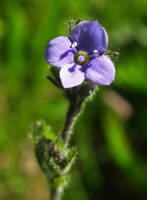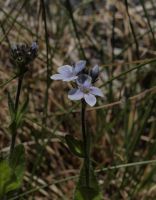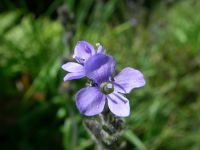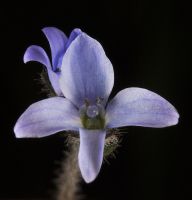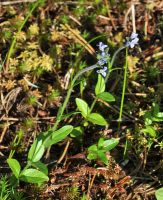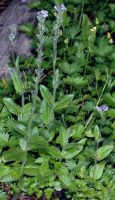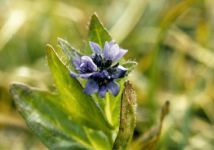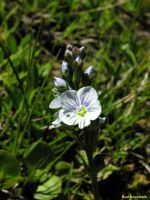Distribution: Occurring on both sides of the Cascades crest in Washington; Alaska to California, east to the Rocky Mountains.
Habitat: Moist ground and seeps, mid- to high elevations in the mountains.
Flowers: July-September
Origin: Native
Growth Duration: Perennial
Conservation Status: Not of concern
Pollination: Bees, flies
Perennial from shallow rhizomes, the stems erect, simple, 0.7-3 dm. tall, with loosely spreading hairs.
Leaves opposite, elliptic to lanceolate or ovate, 1-4 cm. long and 0.5-2 cm. wide, entire or slightly toothed.
Flowers on short pedicels in a compact, terminal raceme, becoming more elongate, the upper subtending bracts alternate; sepals 4; corolla deep blue-violet, 6-10 mm. wide, rotate, 4-lobed, the upper lobe the largest; stamens 2, filaments 1-1.5 mm. long; style 1-3 mm. long.
Capsule 4-7 mm. high, higher than wide, broadly notched, glandular-pubescent.
Publication: Syst. Veg. 1: 101. 1817.
PNW Herbaria: Specimen records of Veronica wormskjoldii in the Consortium of Pacific Northwest Herbaria database
WA Flora Checklist: Veronica wormskjoldii checklist entry
OregonFlora: Veronica wormskjoldii information
E-Flora BC: Veronica wormskjoldii atlas page
CalPhotos: Veronica wormskjoldii photos




